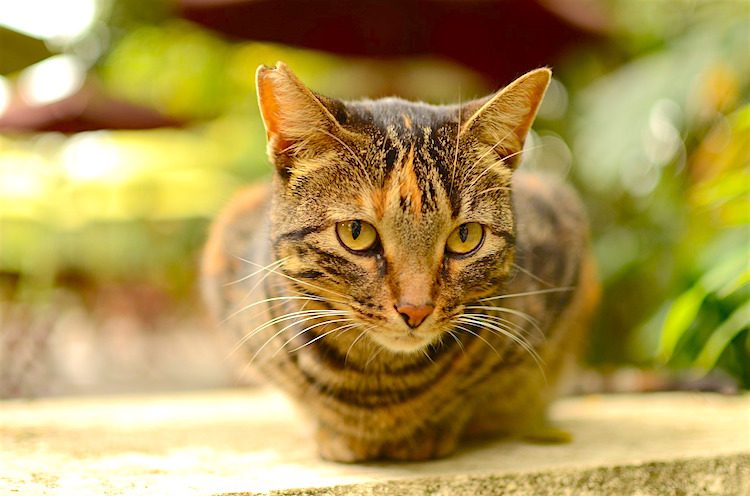
This article on the 10 most common cat health problems was written by a veterinarian, Dr. Pippa Elliott, BVMS, MRCVS. It was last reviewed on June 20, 2024
If you have questions or concerns, call your vet, who is best equipped to ensure the health and well-being of your pet. This article is for informational purposes only and is not a substitute for professional medical advice, diagnosis, or treatment. See additional information.

The Hidden Benefit of Pet Insurance for Common Cat Diseases
Well, one unexpected benefit of pet insurance is that the data from insurance claims gives us valuable insight into which common cat diseases are most prevalent. That’s because when claims are processed, a diagnosis is recorded. This provides a large database of statistics about why people take their sick cat to the vet.
I thought it would be useful to look at the top 10 most common cat health problems. It’s good to be aware of the signs of those conditions, just in case your cat is affected.
10 Most Common Cat Diseases and Health Problems
Upper Respiratory Infections (Snuffles and Sneezes)
Upper respiratory tract infections, such as cat flu or the common cold, are common in cats. These infections are cat-specific, so they do not pose a risk to humans.
Signs:
- Runny nose
- Sneezing
- Poor appetite
- Runny eyes
Some cats can become very sick and require dedicated nursing. For viral infections, there is no specific treatment; it’s a matter of nursing the cat and treating complications such as chest infections with antibiotics. The good news is that many of the more serious infections are preventable with vaccination.
Lymphoma/Lymphosarcoma
This form of cancer affects the body’s white cells, often a type called lymphocyte, flooding the bloodstream. Suspicion may be raised if the cat’s lymph nodes become noticeably swollen, found in pairs in places such as the throat, armpits, shoulders, groin, and behind the knees.
Treatment Options:
Outcomes vary, with some cats responding well while others do not. The treatment can be costly due to the need for numerous tests and repeated chemotherapy sessions.
Bladder Infections
Bladder infections in cats are bacterial infections causing inflammation of the bladder lining.
Symptoms:
- Frequent visits to the litter box
- Discomfort when passing urine, including crying
- Blood in the litter box
- Excessive licking of the rear end
- Squatting outside the litter box
These symptoms are general and similar to feline lower urinary tract disease, overlapping with the potentially life-threatening condition when the bladder is blocked, and the cat cannot urinate. An urgent trip to the veterinarian is essential if you see these signs.
For more information on bladder infections, visit Bladder Infections in Cats.

Diarrhea
When your cat uses a litter box, you become familiar with their bowel habits. Diarrhea is a common problem with various causes.
Potential Causes:
- Food intolerance: Such as overly rich food, milk, or an allergy to a food
- Parasites: Such as roundworms or tapeworms
- Infections: These include viral, bacterial, or protozoal infections
- Inflammatory bowel disease: A complex condition with many trigger factors
- Cancer: Such as intestinal lymphosarcoma
- Secondary to other problems: When an organ, such as the liver or pancreas, isn’t functioning properly, complications like diarrhea can develop
For this condition, it’s not the treatment that’s expensive but the diagnostic tests to work out the cause. Learn more about vomiting and diarrhea in cats.
Diabetes Mellitus
A combination of overeating, lack of activity, and age mean that sugar diabetes is common in cats.
Was YOUR Pet Food Recalled?
Check Now: Blue Buffalo • Science Diet • Purina • Wellness • 4health • Canine Carry Outs • Friskies • Taste of the Wild • See 200+ more brands…

Symptoms of Diabetes:
- Drinking excessively
- Peeing excessively
- A good appetite but the cat loses weight
- Walking on the flat of the heels (advanced stage)
- Cataracts (advanced stage)
When caught early, diabetes in a cat can sometimes be reversed by the cat losing weight. Otherwise, daily injections of insulin are required to control blood sugar levels.
Vomiting
Some cats are so-called “happy vomiters” and throw up once a week but are otherwise well. However, if your cat vomits more often, loses weight, or has an altered appetite, then you need to take notice.
Much like diarrhea, vomiting is a symptom rather than a diagnosis. The vet needs to investigate to determine the underlying cause.
Potential Causes:
- Dietary intolerance
- Hairballs
- Pancreatitis
- Kidney disease
- Diabetes mellitus
- Hyperthyroidism
- Liver disease
Kidney Disease
Kidney disease often springs to mind when thinking about sick cats, but it’s not the most common reason for vet visits. Kidney disease can occur for various reasons, the most common being old-age changes within the kidney where scar tissue develops in an attempt to repair aging kidneys.
A surprising amount can be done to support kidney function and extend the cat’s life.
Supportive Measures:
- Special diets that give the kidneys less work to do
- Medications to help the kidney filter more effectively
- Food additives that reduce the levels of minerals the kidneys struggle to process
- Medication to reduce high blood pressure
- Antacids to relieve nausea and help appetite
- Drugs to improve appetite
- Fluid administration to flush toxins out of the system
For more detailed information on kidney disease, visit Kidney Disease in Cats.
Listen to this vet discuss vaccinations for pets:
Overactive Thyroid Glands (Hyperthyroidism)
This condition didn’t exist when I was at vet school. Seriously— the lab tests that could diagnose hyperthyroidism weren’t around yet, so many older cats went undiagnosed or were labeled as “kidney” cats.
Fortunately, we now have lab tests we can run in-house, so there’s no reason a cat can’t be diagnosed and treated.
Treatment Options:
- Drugs to lower thyroid levels
- Prescription diet food
- Surgery
- Radioactive iodine treatment
Hyperthyroidism tends to occur in senior cats, and the signs include:
- A ravenous appetite
- Increased thirst and lots of puddles in the litter box
- Weight loss despite a good appetite
- Diarrhea/sickness
Dental Problems (Bad Teeth)
Do you brush your teeth every day? Well, what about your cat’s teeth? You can imagine how horrid your teeth would be if you skipped daily toothbrushing. It’s the same for your cat. Learn more about caring for your cat’s teeth.
Feline Lower Urinary Tract Disease (FLUTD)
The most common reason for insurance claims for cats is FLUTD. This includes many cats who have bladder inflammation for unidentified reasons.
These cats are hugely uncomfortable and sometimes even throw debris clots up the urethra that can prevent the cat from peeing. This can be incredibly serious and requires urgent veterinary attention.
For more information on FLUTD, visit Feline Lower Urinary Tract Disease.
Overall Prevention Tips and Good Practices for Cat Health
Ensuring your cat’s health and well-being requires proactive care and preventive measures. Here are some essential tips and practices to keep your feline friend in top condition:
Regular Veterinary Check-ups:
- Schedule regular vet visits for comprehensive health check-ups. Early detection of diseases can lead to more effective treatments and better outcomes. Regular screenings can also help in catching conditions like Feline Leukemia Virus (FeLV) early.
Vaccinations:
- Keep your cat’s vaccinations up to date to prevent common infectious diseases such as rabies, feline distemper, and feline herpesvirus. Vaccinations are essential in maintaining your cat’s immune defense against prevalent viruses.
Balanced Diet:
- Provide a well-balanced diet tailored to your cat’s age, weight, and health needs. Consult your veterinarian for recommendations on high-quality cat food and any necessary dietary supplements.
Maintain a Clean Environment:
- Ensure your cat’s living area is clean and free from hazards. Regularly clean litter boxes and provide fresh water daily. A clean environment reduces the risk of infections and promotes overall health.
Parasite Control:
- Implement a parasite control program to protect your cat from fleas, ticks, and worms. Regular use of preventive treatments and routine screenings for parasites can help keep your cat healthy.
Dental Care:
- Practice good dental hygiene by regularly brushing your cat’s teeth and scheduling professional dental cleanings. Dental problems can lead to more serious health issues if left untreated.
Safe Indoor Environment:
- Keep your cat indoors or provide a safe outdoor enclosure to protect them from potential dangers such as traffic, predators, and diseases from other animals. Indoor cats tend to live longer and healthier lives.
Spaying/Neutering:
- Spay or neuter your cat to prevent unwanted pregnancies and reduce the risk of certain cancers and behavioral issues.
Regular Exercise and Mental Stimulation:
- Engage your cat in regular play and provide toys and activities to keep them mentally stimulated. Exercise helps maintain a healthy weight and reduces the risk of obesity-related diseases.
By following these overall prevention tips and good practices, you can ensure a healthier, happier life for your cat. For more detailed information, refer to the ASPCA’s guide on cat care.
Frequently Asked Questions (FAQ)
What are common cat diseases?
Common cat diseases include Feline Leukemia Virus (FeLV), Feline Immunodeficiency Virus (FIV), heartworm, rabies, and ringworm.



